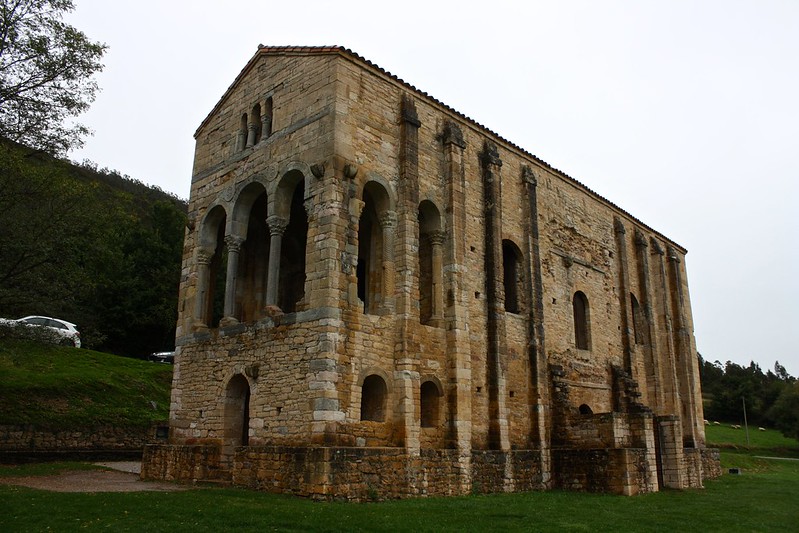Time-Traveling to the Dark Ages in Oviedo, Spain
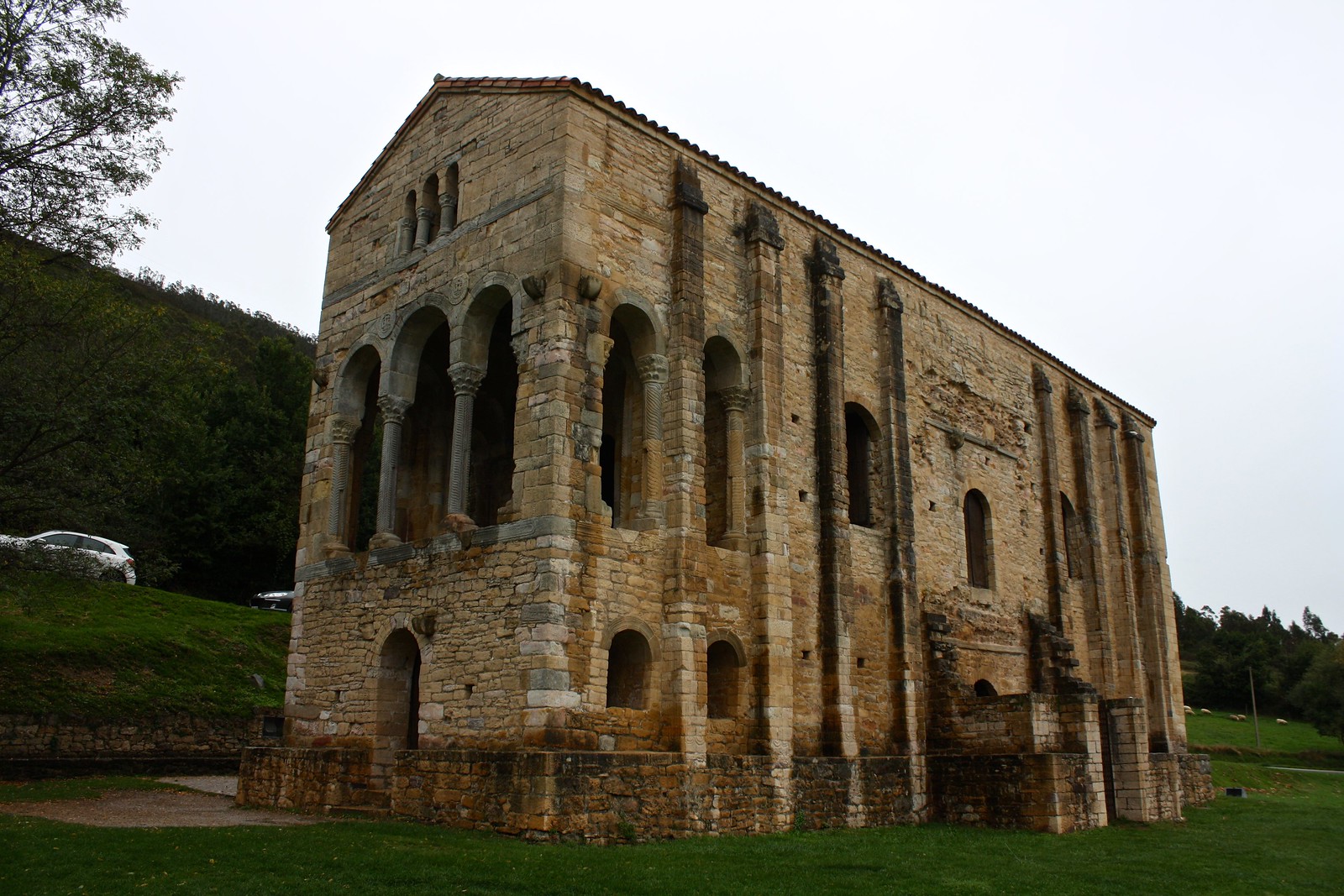 |
| Church of Santa María del Naranco |
Out of all the places we had on the hitlist for our Roommate Road Trip across Spain’s northern coast, I was most looking forward to Oviedo, the capital of Asturias. This city’s pleasant old town, nestled between green mountains and full of restaurants that serve hearty traditional dishes like fabada bean stew, reminded me a lot of Santiago de Compostela’s.
Oviedo kept showing up on my travel radar because of its impressive collection of monuments that date back to the 800s CE—yes, you read that correctly; not 1800 but 800. My inner history geek couldn’t wait to check out three well-preserved pre-Romanesque churches, built in a style that blossomed in this part of Spain during the otherwise gloomy Dark Ages.
What does it mean to be “pre-Romanesque”?
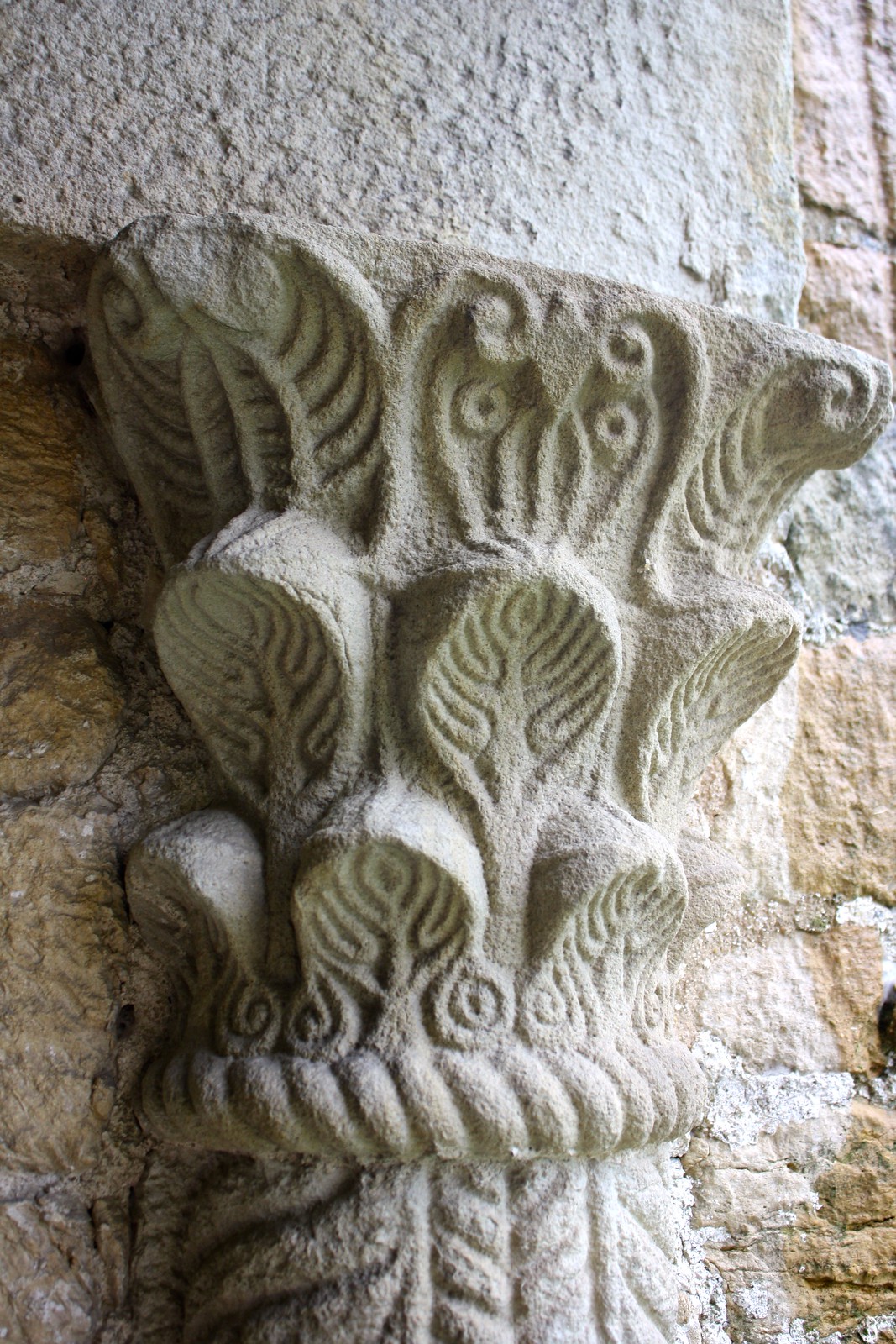 |
| Carved capital on an engaged column |
Also know as Asturian art, this architectural style was born in the earliest days of Spanish history, when the tiny Kingdom of Asturias ruled far-northern Spain. After Muslims from North Africa invaded the Iberian Peninsula in 711 CE, Christian nobles from the routed Visigothic kingdom fled the capital, Toledo, and regrouped in the hard-to-conquer northern mountains. What we now call the pre-Romanesque style flourished between their victory over the Moors at a skirmish in Covadonga in 722 and the departure of the royal court south to more-accessible León in 910.
 |
| Stairs leading up to the Church of Santa María del Naranco |
But enough history. What makes this so special? As the name would suggest, it was a precursor to the Romanesque, the first architectural style to be used across Europe since the fall of the Roman Empire. But just as it looks forward to the movement that would create soaring cathedrals like the one in Santiago, it also looks back to the legacy of Rome. After all, in the 700s and 800s there was still plenty to see leftover from Roman times in Asturias—temples, houses, baths, you name it.
Abandoning the distinctive horseshoe arches from Visigothic times, Asturian architects reached further back and drew on the simple, semicircular Roman arch and threw it in everywhere it could fit: vaulted ceilings, windows, doors, and halls. They also were inspired to resurrect the basilica plan for their churches; this simply means having a long central nave or hall bounded by an aisle on either side, capped with three slanted roofs.
The few churches that remain from this two-century-long movement have been declared World Heritage Sites by UNESCO, and for me I think the fact that they’ve lasted 1,200 years more or less intact, despite wars and bad weather, is just as fascinating as their unique architectural style.
Church of San Julián de los Prados
 |
| Exterior |
The oldest church in Oviedo, San Julián de los Prados dates back to the early 800s. It’s also the largest of the pre-Romanesque churches in town, clearly built in the basilica plan and with several porticoed chapels and lobbies budding off from the sides.
 |
| (Source: Wikimedia Commons) |
I’ll be honest, the outside of this church is actually kind of boring, but the inside is really spectacular. Although they’re crumbling into oblivion, you can still see most of the original medieval frescoes, which were based on earlier Roman decorative designs. These frescoes, combined with the serene semicircular arches that hop from pillar to pillar, really gave me an eerie feeling that I had been transported back to the early Middle Ages.
Church of Santa María del Naranco
 |
| Exterior |
Originally built as a royal palace in 848, this wonderfully-symmetrical church can be found high up on Mount Naranco, to the north of downtown Oviedo. A single hall covered in soaring barrel vaults rests atop a dark, dank basement. This church is filled with light, as equal-sized windows punch through the walls all the way around, and the arches that mark them off dance from column to column.
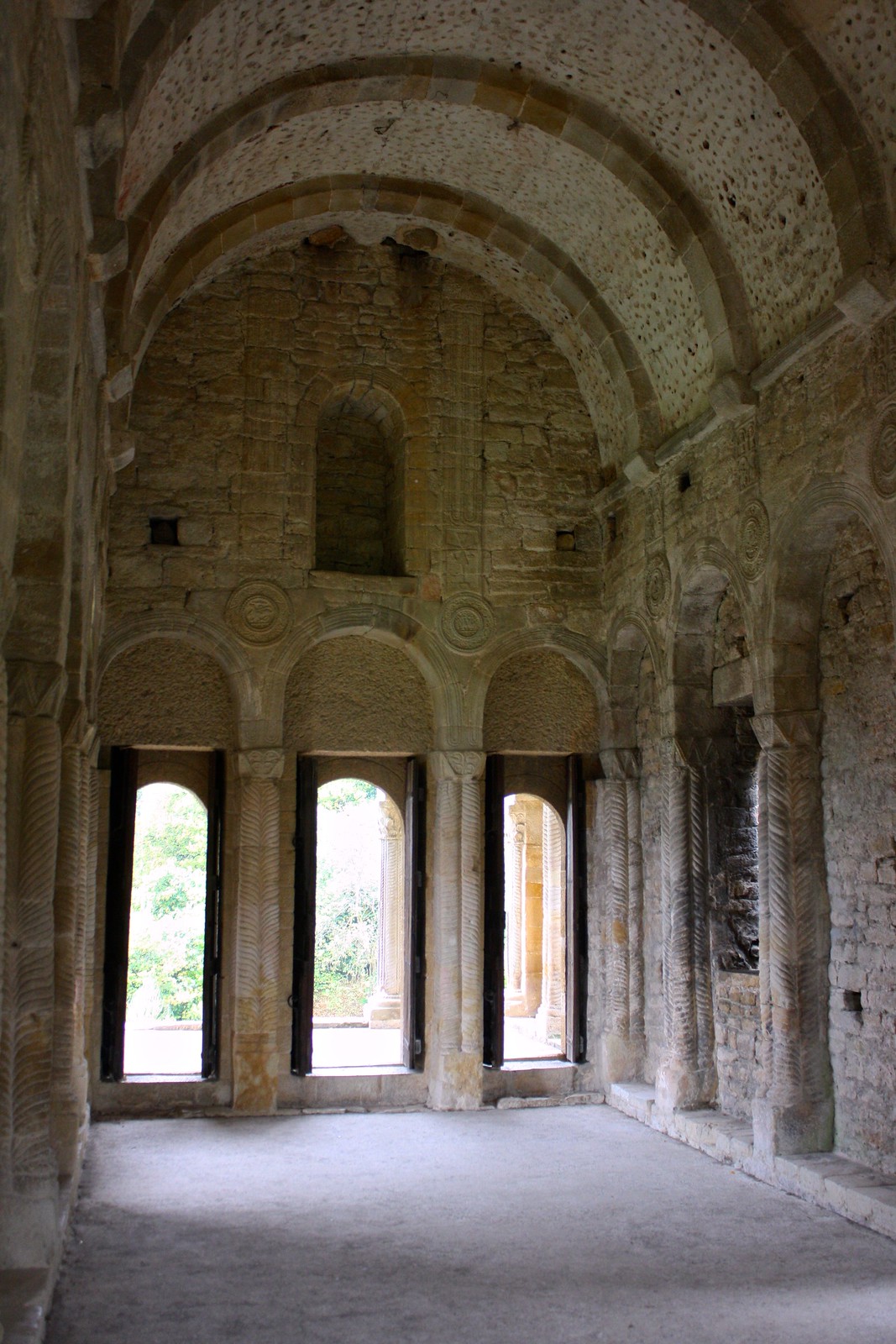 |
| Interior |
The pair of arched porticoes that cap off either end are a really nice touch. Their triplets of arches recall a Roman triumphal arch, and apparently after the palace was given to the Church, an altar was set up inside one of these covered porches to use during Mass. I really loved all the interior details, especially the sculpted column capitals, the spiral-carved columns, and the medallions that balance in between the arches.
Church of San Miguel de Lillo
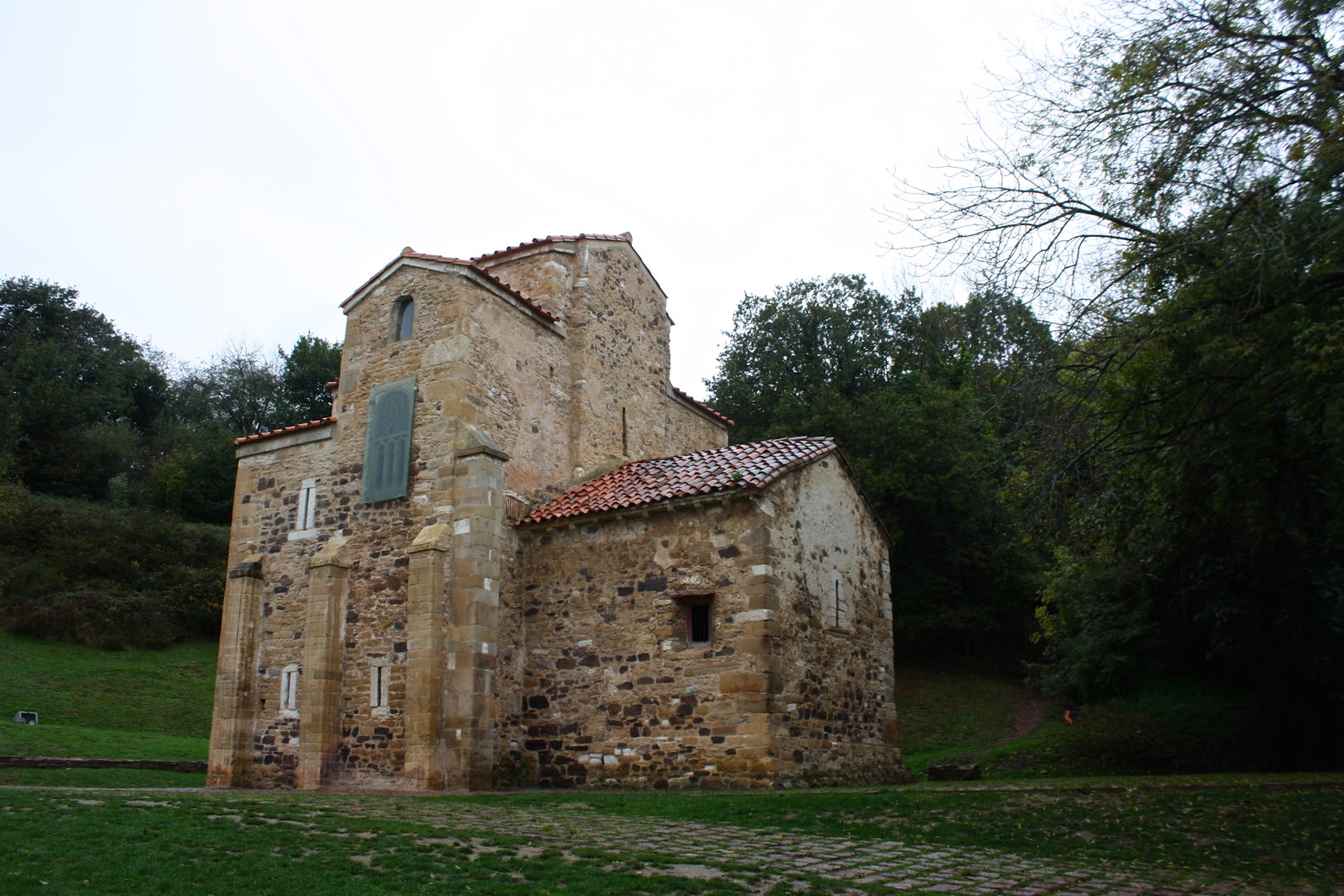 |
| Exterior |
Constructed in 842, San Miguel de Lillo was intended to serve as a royal chapel, connected to the palatial complex that would have included the nearby Santa María del Naranco. About half of the building collapsed a long time ago, so this tiny church appears much smaller than it originally would have. On the outside you can appreciate some of the original lattice stonework—don’t ask me how they did it but it looks more like carved wood than stone!
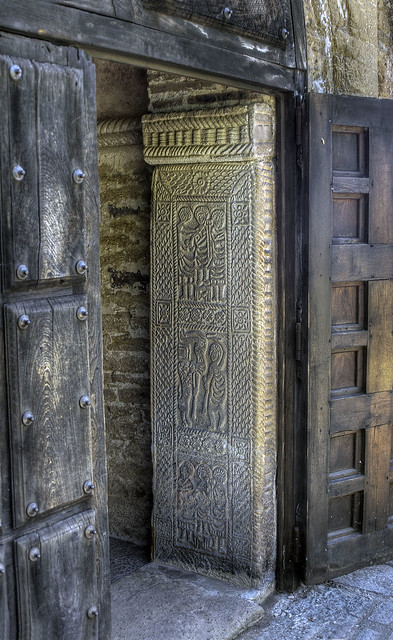 |
| (Source: Ángel M. Felicísimo) |
The inside was dark and cramped, with hardly enough room for two or three pews. With only a handful of narrow, “punched-out” slits for windows, the atmosphere was more than a little moody, and because the church is so small nothing really stands out in my memory. However, I almost overlooked the detailed, Byzantine-style carved door jambs and only noticed them on my way out.
How to get there
 |
| View of Oviedo from Monte Naranco |
The Santa María and San Miguel churches are a stone’s throw from each other on top of Mt. Naranco, which is a good hour-long hike north of the old town. Alternately, you can take the once-hourly A1 bus up the mountain; get off at the Prerrománico stop. You can only see these churches on guided tours that start at Santa María and continue on to San Miguel, but when we visited on a Monday they were free to enter (but without a guide).
The Church of San Julián de los Prados is in a much more central location, about 15 minutes walking distance from the cathedral. It’s only open for a couple hours in the morning and afternoon, so double check online before you go.
For more information
- “Monuments of Oviedo and the Kingdom of the Asturias” from UNESCO
- Arquitectura Prerrománica Asturiana on Arteguias.com (Spanish)
- Asturian art on Turismo-Prerromanico.com
- San Julián de los Prados on TurismoAsturias.es
- Santa María del Naranco on TurismoAsturias.es
- San Miguel de Lillo on TurismoAsturias.es
Does early-medieval art and architecture fascinate or bore you? What do you think about these 1,000-year-old churches in Asturias? Share your thoughts in the comments section below!
